By Christopher Miskimon
The Battle of Waterloo was A nightmare from hell. Musket balls, shot, and shell flew back and forth, tearing apart men and horses and leaving their broken bodies to litter what had been a pristine field just days before. The din of cannons and musket volleys was joined by the pitiful wailing of wounded men, dying animals, and the roar created by the hooves of charging cavalry.
At about 5 pm much of the battle focused around the small farm of La Haye Sainte, located in the battlefield’s center. The French had made several attempts to take the walled complex throughout the day. But the riflemen of the Second Light Battalion, King’s German Legion, defending the farm and an adjacent orchard, had held against everything thrown at them. Their strong resistance delayed the prospects of a French victory. These men were Hanoverians, serving in a British-raised unit and wearing the green uniforms often associated with rifle-armed sharpshooters.
A concentrated French attack crashed against the walls of La Haye Sainte. Masses of enemy infantry moved on it. The area was shrouded in smoke from the farm’s barn, now steadily burning. Another battalion of the King’s German Legion tried moving to relieve their battered brethren at the farm, but they were set upon several times by French cavalry. This forced them to form into defensive squares, saving themselves from destruction, but wasting precious time.
At La Haye Sainte the fighting had been desperate for most of the day. The riflemen were almost entirely out of ammunition. A few companies worth of reinforcements arrived, but they were armed with muskets, not rifles; their ammunition would not fit the German troop’s weapons. The clash at the walled farmhouse had reached a crisis point.
The French were just outside the walls, so close they could seize the German rifles when they were pushed through loopholes to fire. Bayonets, rifle butts, and even stones were used to beat the French back. When the attack finally dwindled away around an hour later, the remaining riflemen were down to at most three to four rounds apiece. Desperate messages were sent requesting more ammunition, but none came; the wagons carrying it had been lost before the battle.
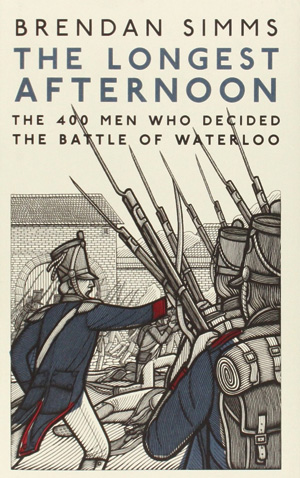 Another French attack quickly came. This time the French were emboldened by the slackening German fire and began swarming onto the walls and roofs of the farm. It was obvious now La Haye Sainte would be lost. The German commander, Major George Baring, sadly gave the order to retreat. A desperate rearguard action covered the retreat, but at a heavy cost. The unit had paid a heavy price for their stubborn defense. Their efforts had not been in vain, though.
Another French attack quickly came. This time the French were emboldened by the slackening German fire and began swarming onto the walls and roofs of the farm. It was obvious now La Haye Sainte would be lost. The German commander, Major George Baring, sadly gave the order to retreat. A desperate rearguard action covered the retreat, but at a heavy cost. The unit had paid a heavy price for their stubborn defense. Their efforts had not been in vain, though.
Although the farmhouse was lost, the delay caused by the courageous defense upset the chances of French victory, allowing the Prussians to arrive and deal a decisive blow alongside the Allied army. The Longest Afternoon: The 400 Men Who Decided the Battle of Waterloo (Brendan Simms, Basic Books, New York, 2015, 208pp, maps, notes, bibliography, index, $25.99, hardcover) relays these events as the critical turning point at Waterloo. Had these men given way earlier, Waterloo may very well have ended as a French victory. The entire day’s events, both before and after the French capture, are covered in thorough detail.
Using new archival research including previously unknown first-person accounts, the author takes this one part of a large battle and breaks it down to the personal level. Most accounts of war from this period focus on the officers with only infrequent mention of the soldiers they commanded. This book tells the enlisted men’s stories. It does this not through the usual sketchy anecdotal tales, but by identifying them by their names and specific actions. There is an extensive amount of detail about what was only one battalion in a very large army.
This year marks the 200th anniversary of this famous battle. Waterloo was a battle so large and important that thousands of books have been written about it. Despite this wealth of coverage, the actions of these 400 Hanoverians have never received such in-depth attention in an English-language text. The reader is given a vivid impression of what it was like to be at the focal point of La Haye Sainte, where a small number of stout men surrounded by death, smoke, heat, and flame did all that could be asked of them and more.
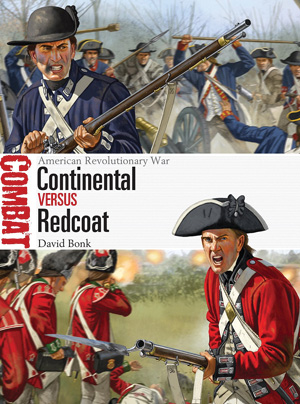 Continental Versus Redcoat: American Revolutionary War (David Bonk, Osprey Publishing, Oxford, UK, 2014, 80 pp., maps, illustrations, bibliography, index, $18.95, softcover)
Continental Versus Redcoat: American Revolutionary War (David Bonk, Osprey Publishing, Oxford, UK, 2014, 80 pp., maps, illustrations, bibliography, index, $18.95, softcover)
Osprey’s Combat Series compares famous soldiers from two armies that fought each other. This new title pits the American Continental Army, the fledgling professional force of the rebellion, with the well-trained, highly disciplined British soldier known colloquially as the Redcoat. Each force had its strengths and weaknesses, some of them not well known today.
The author describes the recruitment and organization processes for each type of soldier, along with their respective uniforms, weapons, and equipment. The author also covers how each force was trained and drilled. To show how these opponents conducted themselves in battle, chapters are devoted to three engagements—Brandywine, Monmouth Courthouse and Cowpens—that occurred over a four-year period to show how the combatants performed under different circumstances. Numerous first-hand accounts by participants are used along with contemporary artwork. As usual with Osprey books, there are a number of high-quality original illustrations.
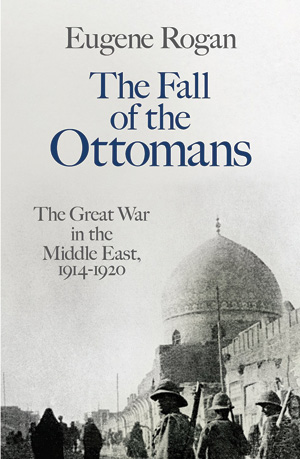 The Fall of the Ottomans: The Great War in the Middle East (Eugene Rogan, Basic Books, New York, 2015, 448 pp,, maps, photographs, notes, bibliography, index, $29.99, hardcover)
The Fall of the Ottomans: The Great War in the Middle East (Eugene Rogan, Basic Books, New York, 2015, 448 pp,, maps, photographs, notes, bibliography, index, $29.99, hardcover)
The Ottoman Empire was considered a weak and crumbling nation in the early 20th century. Despite this perception, the Ottomans controlled considerable territory in the Middle East during this time. Although they had little ability to project power beyond their borders, they were a force to be reckoned with when on the defensive. Their situation was improved by the considerable aid they received from their German allies. If called upon to defend themselves, they could do so with innovation and courage.
For these reasons, the initial British and French attacks against the Turks ended in stalemate or outright defeat. In Lower Mesopotamia and on the Gallipoli Peninsula, the Ottoman forces were able to cause untold hardships and loss to their foes. They essentially routed the British at Gallipoli, forcing their withdrawal and causing much consternation throughout the British government.
The persistent efforts of the British eventually turned the tide of war against Turkey. Using a combination of regular Commonwealth forces and irregular Arab forces raised against their Ottoman masters, the British eventually brought defeat to Turkey’s doorstep. The armistice brought the dissolution of the Ottoman Empire as England and France redrew the Middle East’s borders into a map of their liking.
The Middle Eastern Theater in World War I is getting more attention now, and this book is an excellent primer on the subject. The military details of this wide-ranging topic are covered in detail along with the related political actions. The conclusion includes the effects of the armistice on Turkey and its subsequent history, providing a complete look at the end of an empire that had endured for centuries.
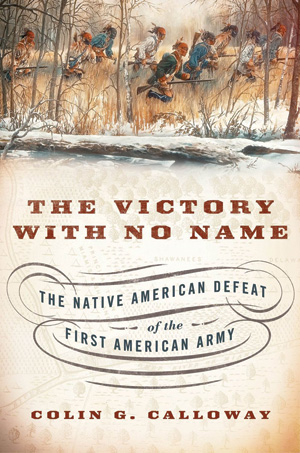 The Victory with No Name: The Native American Defeat of the First American Army (Colin G. Calloway, Oxford University Press, 2014, 224 pp., maps, illustrations, notes, bibliography, index, $24.95, hardcover)
The Victory with No Name: The Native American Defeat of the First American Army (Colin G. Calloway, Oxford University Press, 2014, 224 pp., maps, illustrations, notes, bibliography, index, $24.95, hardcover)
A young United States in 1791 sent an army to defeat opposing Native Americans along the Miami River in northwest Ohio. That army was badly beaten, suffering almost 1,000 casualties from a force of 1,400 compared to only a few dozen lost to their opponents. It was the nation’s worst defeat of the period, and also the largest victory Native Americans ever won.
The battle is obscure today, for in the long narrative of American expansion at the expense of the indigenous peoples, it was a small affair. The outcome was reversed with the Battle of Fallen Timbers in 1794. This book places the event within the context of its time. Spain and England occupied North America, as well, and they watched to see how the American experiment would turn out. It also changed the way the young nation organized its military forces and launched the first congressional investigation. It is a detailed look at a major yet unknown event in U.S. history.
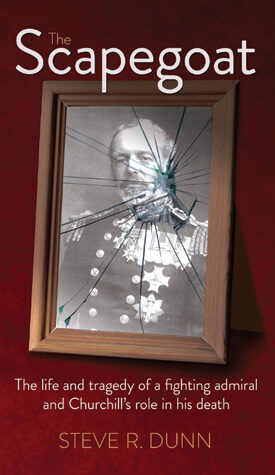 The Scapegoat: The Life and Tragedy of a Fighting Admiral and Churchill’s Role in His Death (Steve R. Dunn, Book Guild Publishing, Hove UK, 2014, 252 pp., photographs, appendices, notes, index, $28.95, hardcover)
The Scapegoat: The Life and Tragedy of a Fighting Admiral and Churchill’s Role in His Death (Steve R. Dunn, Book Guild Publishing, Hove UK, 2014, 252 pp., photographs, appendices, notes, index, $28.95, hardcover)
World War I was just a few months old when Rear Admiral Christopher Craddock led a squadron of the British Royal Navy into the Battle of Coronel. This engagement took place not far from the Falkland Islands and resulted in the worst defeat of British sea forces in a century. Two cruisers and more than 1,500 sailors were lost in return for only three Germans wounded in a very lopsided defeat. Craddock died during the battle and was subsequently blamed for the loss.
This biography of Craddock seeks to reveal the reasons for the defeat and the unfair treatment he posthumously received in the aftermath. Rather than demonize the involved parties, the author seeks to explain the complexities of dealing with a naval defeat during a difficult period in British history. The author places the various circumstances surrounding Craddock and the battle into context.
 Fallujah Redux: The Anbar Awakening and the Struggle with Al-Qaeda (Daniel R. Green and William F. Mullen III, Naval Institute Press, Annapolis, MD, 2014, 192 pp., maps, photographs, index, $37.95, hardcover)
Fallujah Redux: The Anbar Awakening and the Struggle with Al-Qaeda (Daniel R. Green and William F. Mullen III, Naval Institute Press, Annapolis, MD, 2014, 192 pp., maps, photographs, index, $37.95, hardcover)
Fallujah is one of the most memorable names of the Iraq War. The city was the scene of hard fighting, atrocities, and a protracted struggle to restore a semblance of peace. Initially occupied by the Americans in 2003, it soon became a hot bed of insurgency. This led to a difficult battle for the city, one the Americans won in 2004. The victory was short lived, however, as the insurgency continued for four more years. The situation began to change with the Anbar Awakening when U.S. forces began working closely with the local tribes in the province. Together, Americans and Iraqis drove out the insurgency in a cooperative campaign.
The book is written from the perspective of the veterans who fought there. It is a comprehensive look at the events that transformed Fallujah from just another Iraqi city to a name catapulted to the world stage.
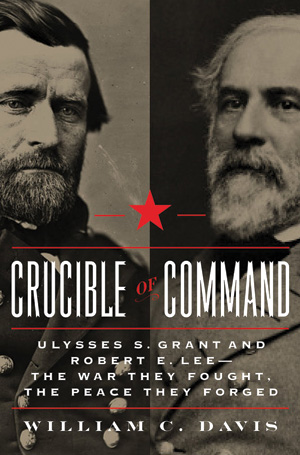 Crucible of Command: Ulysses S. Grant and Robert E. Lee—The War They Fought and the Peace They Forged (William C. Davis, Da Capo Press, Boston, MA, 2015, 629 pp,, maps, photographs, notes, bibliography, index, $32.50, hardcover)
Crucible of Command: Ulysses S. Grant and Robert E. Lee—The War They Fought and the Peace They Forged (William C. Davis, Da Capo Press, Boston, MA, 2015, 629 pp,, maps, photographs, notes, bibliography, index, $32.50, hardcover)
Grant and Lee are two of the most famous opponents in military history. Their epic struggle during the American Civil War has filled countless pages, turning much of their story into near clichés. Grant is frequently portrayed as the hard-drinking, hard-minded general who failed at everything else he tried. In contrast, Lee is seen as a brilliant tactician and gentleman soldier tragically fated to serve a losing cause.
Both have rightfully earned their place in the pantheon of great American soldiers, but there is more to them than these stereotypes. In this volume, the well-known author approaches Grant and Lee in a new way. He holds that they were very much alike. Through reinterpretation of their personalities, experiences, and characters, both generals became very similar in their attitudes, talents, and abilities. Even if the reader disagrees with some of the premises, it is still worth reading and can serve as a touchstone for future studies on the two heroic generals.
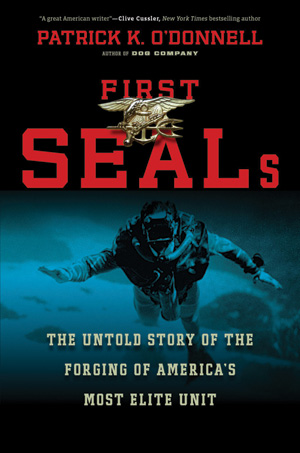 First Seals: The Untold Story of the Forging of America’s Most Elite Unit (Patrick K. O’Donnell, Da Capo Press, Boston, MA, 2014, 290 pp., maps, photographs, notes, index, $25.99, hardcover)
First Seals: The Untold Story of the Forging of America’s Most Elite Unit (Patrick K. O’Donnell, Da Capo Press, Boston, MA, 2014, 290 pp., maps, photographs, notes, index, $25.99, hardcover)
The U.S. Navy Sea, Air and Land (SEAL) Teams are legendary today, almost to the point of mythology. These elite warriors have their own mythos, and it is found in their predecessors of the Maritime Unit, a group of commando-swimmers who pioneered the techniques today’s SEALs use to design their own practices.
In 1942 a disparate group of men, including a movie star, a dentist, and several surfers, set about forming the Maritime Unit. They developed new ways to infiltrate enemy territory, conduct reconnaissance, and perform numerous types of missions in enemy-held territory. Throughout the rest of the war, they transformed their theories into reality. In the Mediterranean region, mainland Europe, and the Pacific, the commando-swimmers went behind the lines. Some were captured, even winding up in the Mauthausen concentration camp.
Much of this story was lost in obscurity after the war. Extensive research and interviews have now brought this story back to light. The author is an established authority on special operations forces and his new book sheds light on the origin of the SEALs.
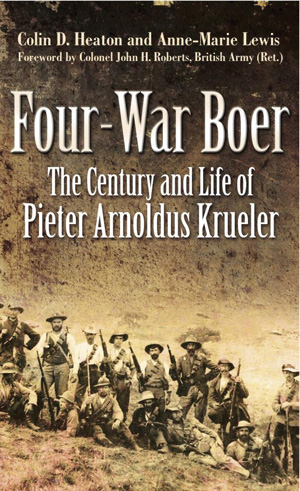 Four War Boer: The Century and Life of Pieter Arnoldus Krueler (Colin D. Heaton and Anne-Marie Lewis, Casemate Publishers, Havertown, PA, 2014, 274 pp., photographs, notes, bibliography, index, $32.95, hardcover)
Four War Boer: The Century and Life of Pieter Arnoldus Krueler (Colin D. Heaton and Anne-Marie Lewis, Casemate Publishers, Havertown, PA, 2014, 274 pp., photographs, notes, bibliography, index, $32.95, hardcover)
Africa has seen its share of bloodshed over the last 120 years. Soldier Pieter Krueler witnessed much of it. Born in 1885, he served as a scout during the Second Boer War while only 14 years old. At the outset of World War I, he served the Germans in East Africa under the command of the famous Paul von Lettow-Vorbeck, the officer who conducted a long campaign of resistance to British forces in the region. After the Great War, he was able to continue his life despite serving on the opposite side of many of his countrymen.
During the 1930s Pieter left Africa for Spain, becoming a mercenary in the civil war there on behalf of a Basque movement. When World War II began, he took a role training officers and acting as a coastwatcher, this time for the British Dominion and Commonwealth forces. Though aging, he was energetic enough to again become a mercenary in the Congo during the 1960s. Afterward, he trained South African Selous Scouts and Army commandos.
Pieter was a Special Forces soldier before the concept was invented. The author includes a chapter on the elite Selous Scouts, a force the Boers helped create.
 The River Was Dyed with Blood: Nathan Bedford Forrest and Fort Pillow (Brian Steel Wills, University of Oklahoma Press, Norman, 2014, 274 pp., maps, illustrations, appendices, notes, bibliography, index, $29.95, hardcover)
The River Was Dyed with Blood: Nathan Bedford Forrest and Fort Pillow (Brian Steel Wills, University of Oklahoma Press, Norman, 2014, 274 pp., maps, illustrations, appendices, notes, bibliography, index, $29.95, hardcover)
Nathan Bedford Forrest is a controversial figure in American military history. His skill as a cavalry commander is widely acknowledged, but many people question his moral standing.
Most of the criticism of Forrest is attributed to the fighting at Fort Pillow on the Mississippi River in Tennessee. During this battle, many Union soldiers, including African American troops, were slain by the victorious Confederates. Forrest himself wrote of the river being “dyed” with the blood of the slain Union defenders.
The dispute at Fort Pillow centers on whether Forrest’s cavalry massacred surrendering soldiers or whether the killings were justified because the battle was still in progress and those slain were combatants. Nevertheless, the Northern press accused Forrest of resorting to butchery. The accusation would follow him for the rest of his life and beyond.
This work makes a case for Forrest as neither a barbarian nor innocent, stating that while he did not specifically order the massacre of the garrison, he did lose control of his troops. Those troops saw African Americans in uniform as an anathema and acted savagely, making Forrest responsible for their conduct but not the instigator of it.
Short Bursts
 With the 200th anniversary of Waterloo in June there are many new books on the subject. This issue’s Short Bursts includes many of these new titles.
With the 200th anniversary of Waterloo in June there are many new books on the subject. This issue’s Short Bursts includes many of these new titles.
The Battle of Waterloo: A Series of Accounts by a Near Observer 1815 (various authors, Osprey Publishing, 2015, $14.95, hardcover) A reprint of a book compiling numerous articles written soon after the battle. Includes maps and period drawings by first-hand observers.
Waterloo: The Great Battles Series Book One (Alan Forrest, Oxford University Press, 2015, $29.95, hardcover) This book focuses less on the battle and more on the cultural and legacy of Waterloo. Different nations took diverse views of its meaning and significance.
Waterloo 1815 (1): Quatre Bras (John Franklin, Osprey Publishing, 2015, $21.95, softcover) This is the first in a trilogy of books on the campaign that led to the decisive battle. It focuses on the Battle of Quatre Bras, an engagement on the road to Waterloo.
Waterloo 1815 (2): Ligny (John Franklin, Osprey Publishing, 2015, $21.95, softcover) The second book looks at the Battle of Ligny. The action occurred the same day as Quatre Bras, also paving the way for the decisive encounter at Waterloo two days later.
Inside the President’s Helicopter: Reflections of a White House Senior Pilot (Lt. Col. Gene T. Boyer with Jackie Boor, Cable Publishing, 2014, $24.95, hardcover) The author saw combat in Vietnam and later flew presidential helicopters. This memoir recounts his experiences through war and peace.
 Turning the Tide at Gettysburg: How Maine Saved the Union (Jerry Desmond, Down East Books, 2014, $16.95 softcover, $9.99 e-book) A specific look at the Maine regiments that served at Gettysburg. The author reveals how each played its part in the victory.
Turning the Tide at Gettysburg: How Maine Saved the Union (Jerry Desmond, Down East Books, 2014, $16.95 softcover, $9.99 e-book) A specific look at the Maine regiments that served at Gettysburg. The author reveals how each played its part in the victory.
A Sniper’s Conflict (Monty B, Skyhorse Publishing, 2014, $24.95, hardcover) A British Army Sniper’s memoir of his time in Iraq and Afghanistan. Full of detailed descriptions of daily operations.
The Hidden History of America at War: Untold Tales from Yorktown to Fallujah (Kenneth C. Davis, Hachette Books, 2015, $30.00, hardcover) The author has chosen six battles from American history and used them to demonstrate important milestones in the nation’s development.
Whitey: The Story of Rear Admiral E.L. Feightner, A Navy Fighter Ace (Peter B. Mersky, Naval Institute Press, 2014, $39.95, hardcover) A biography of a pilot who went from the deck of a WWII carrier to the halls of the Pentagon. Along the way he helped develop a new generation of Cold War aircraft.
Hurricane from the Heavens: The Battle of Cold Harbor, May 26-June 5, 1864 (Daniel T. Davis and Phillip S. Greenwalt, Savas Beatie Publishing, 2014, $12.95, softcover) A guidebook for those who want to tour the Cold Harbor battlefield. It also serves as a solid work on the battle for those who want to learn more about how it unfolded and what was at stake.
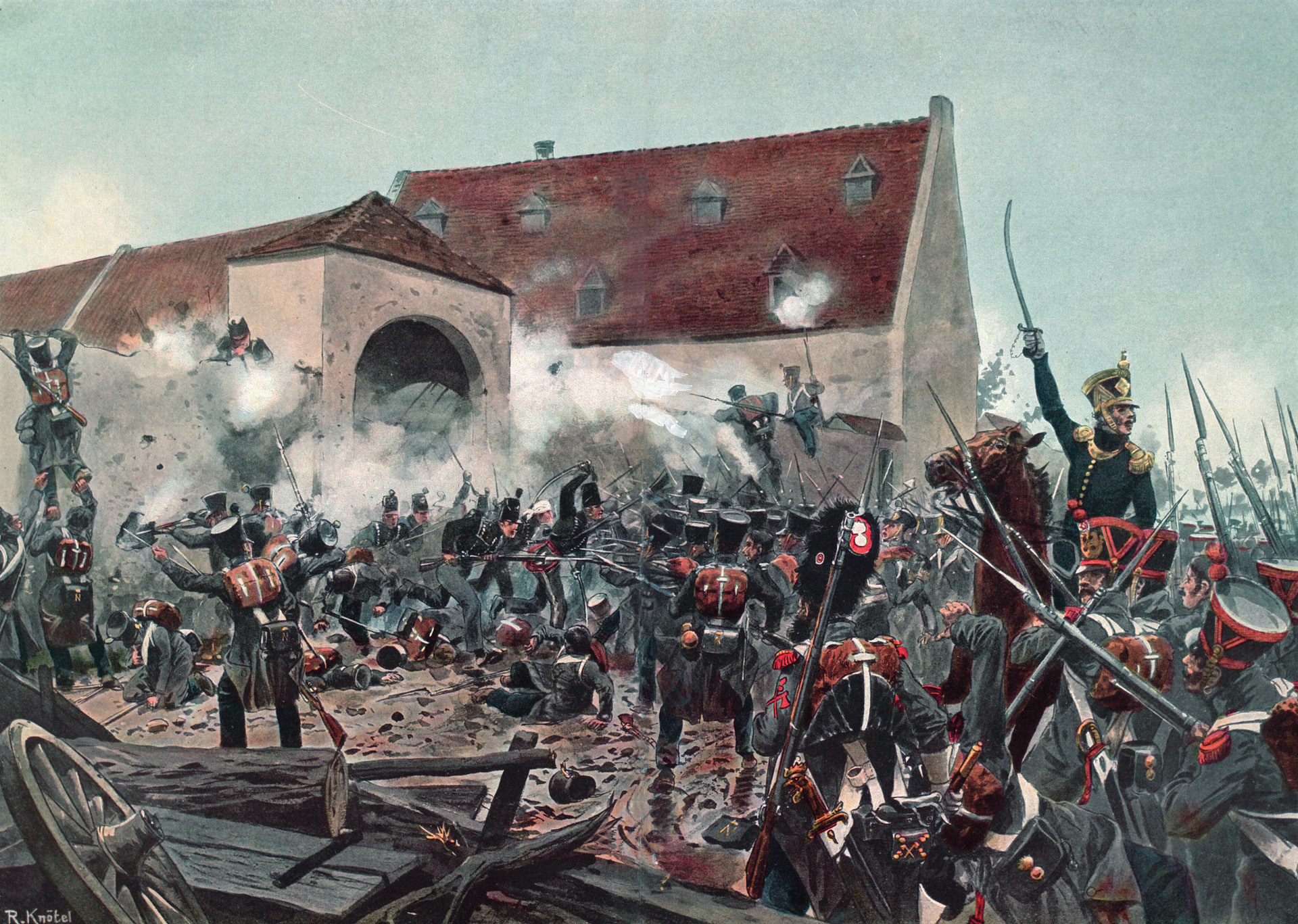
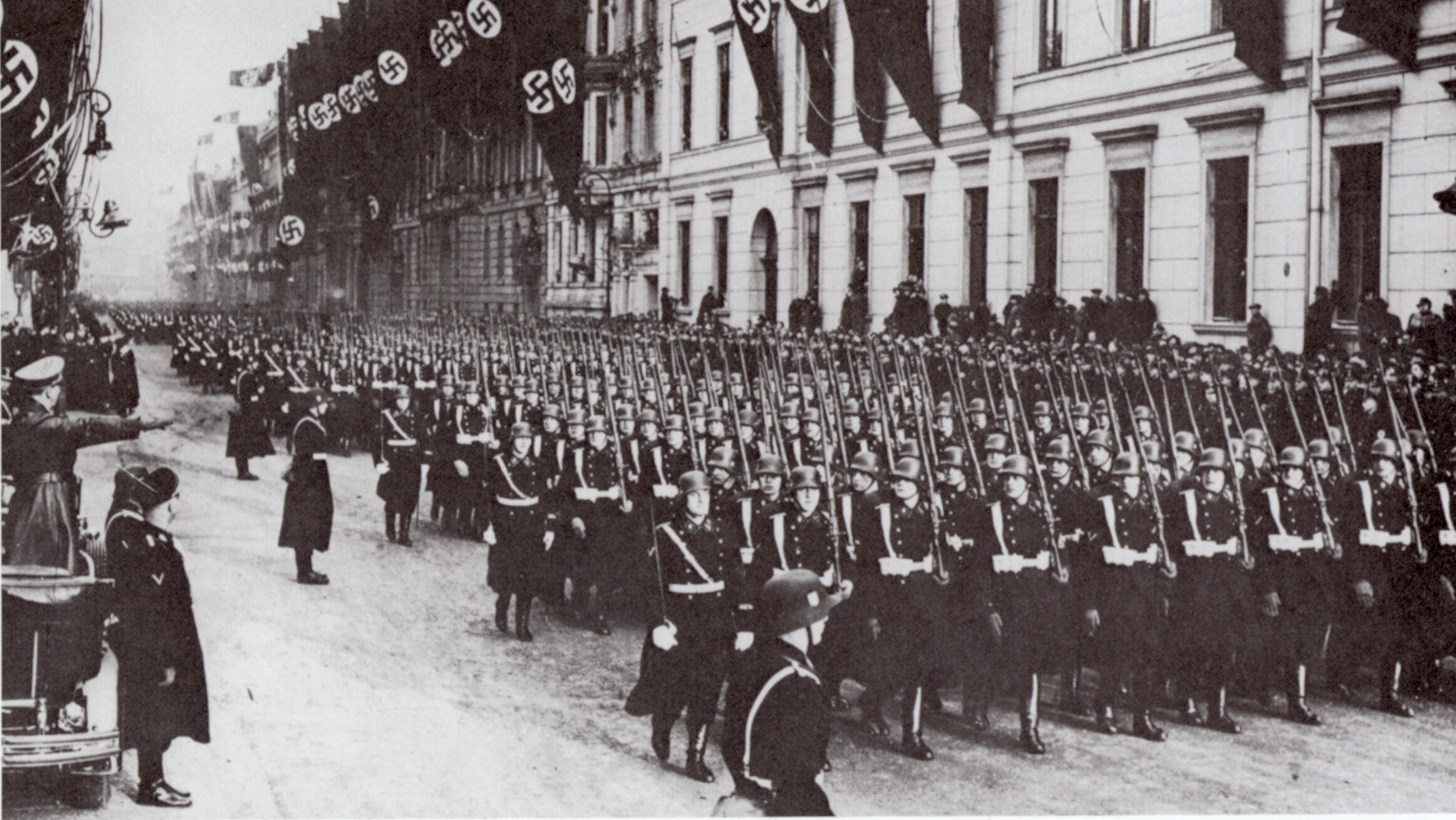
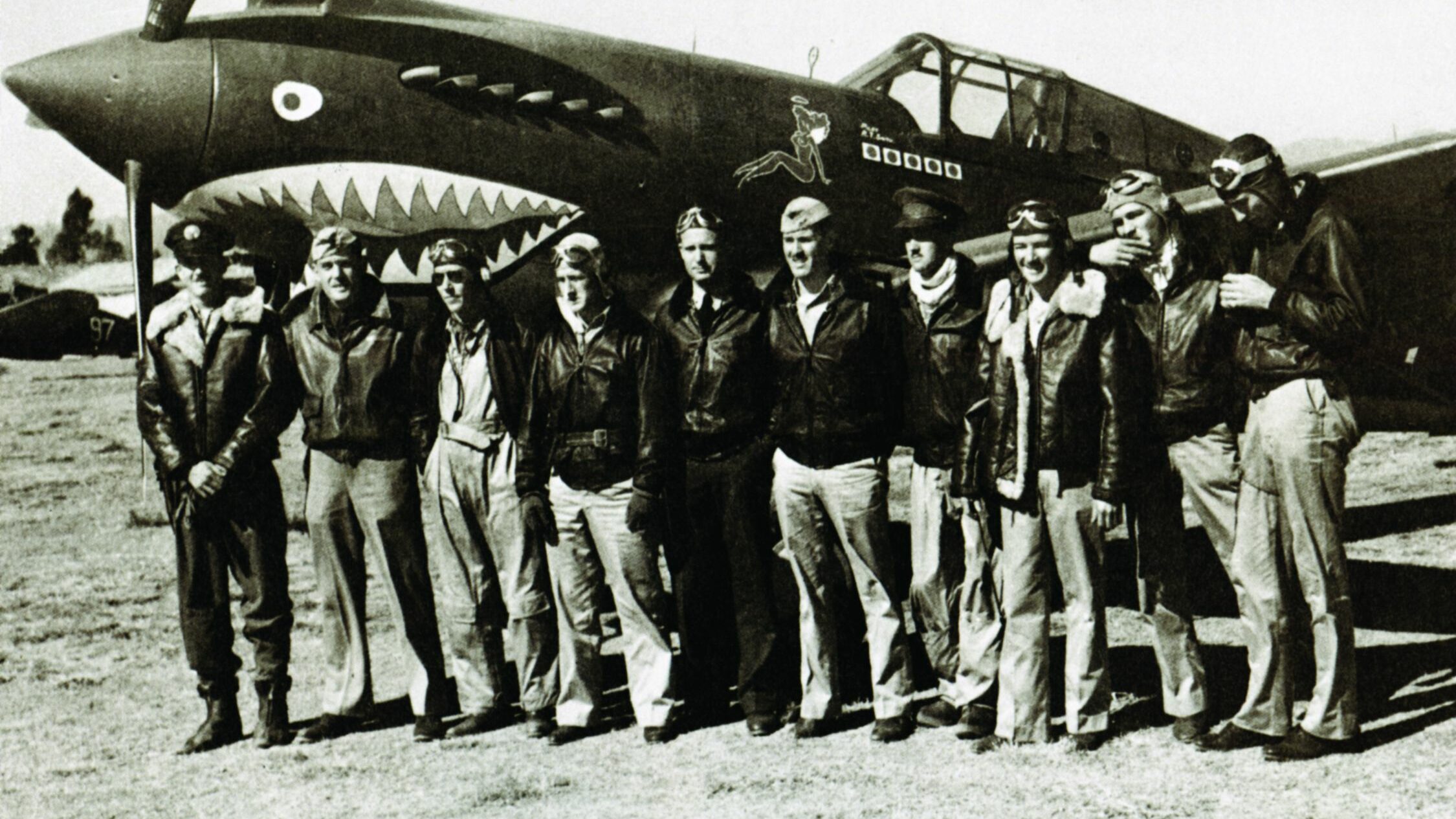
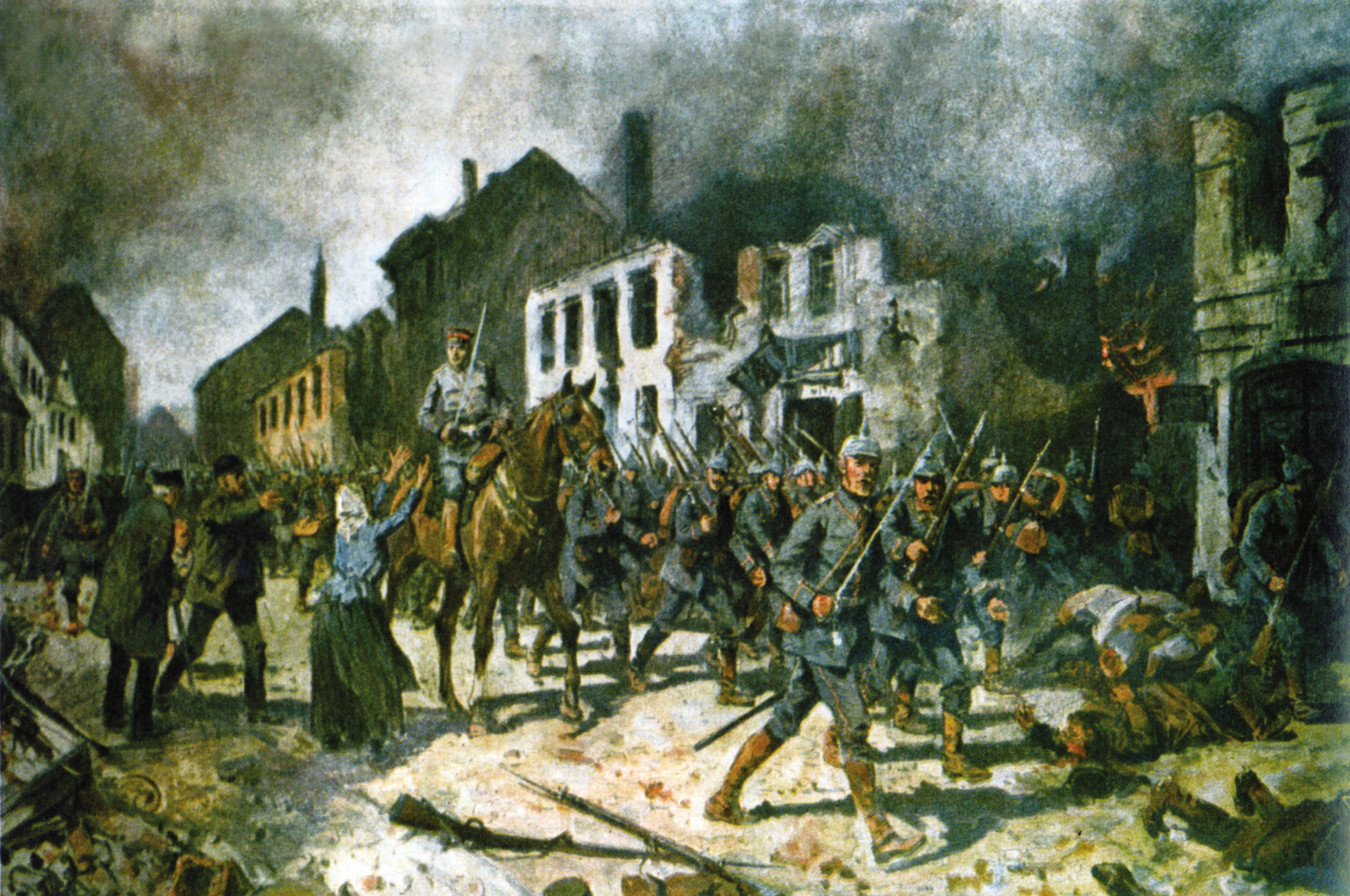
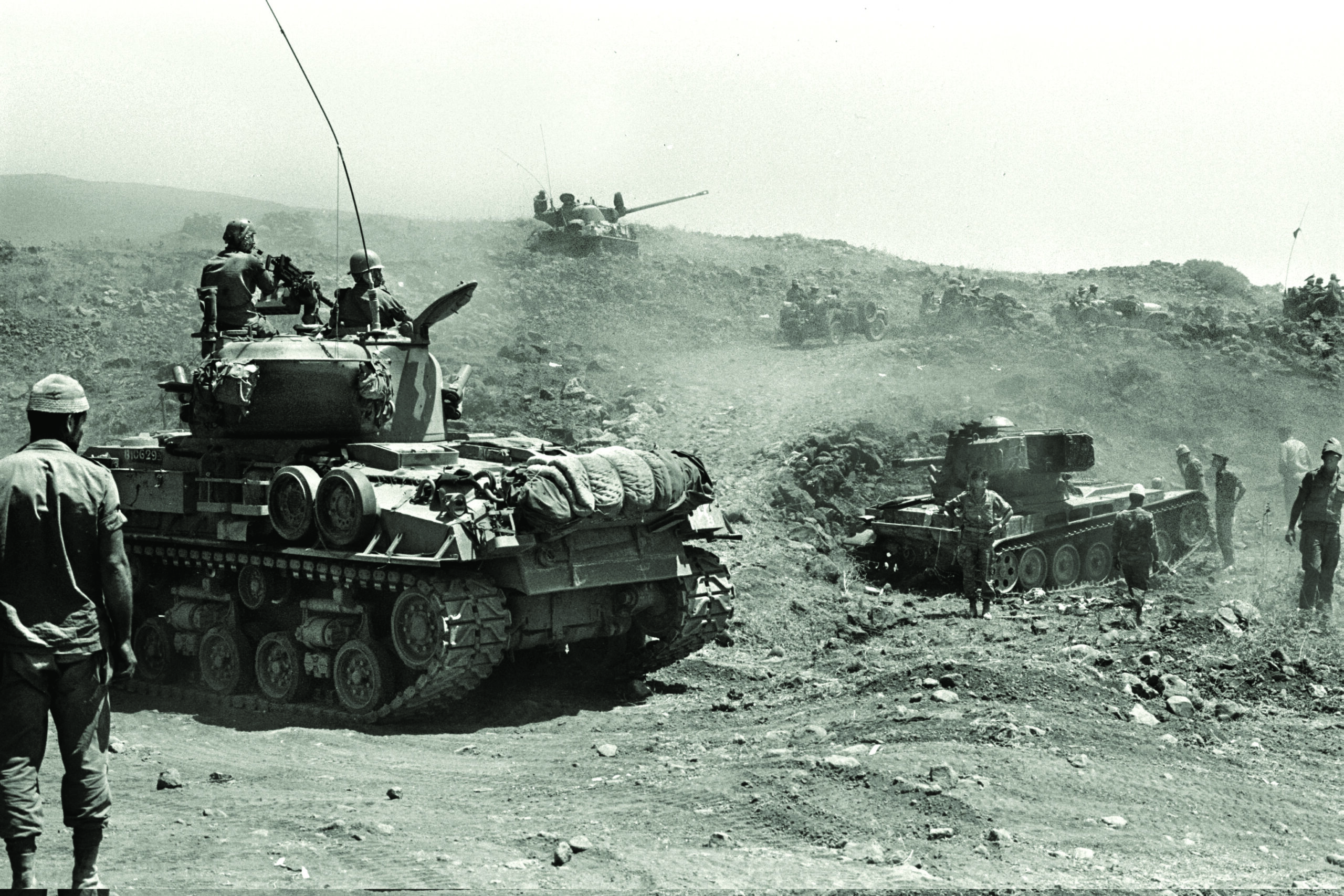
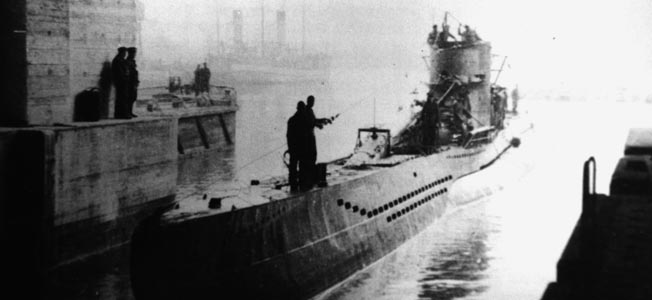
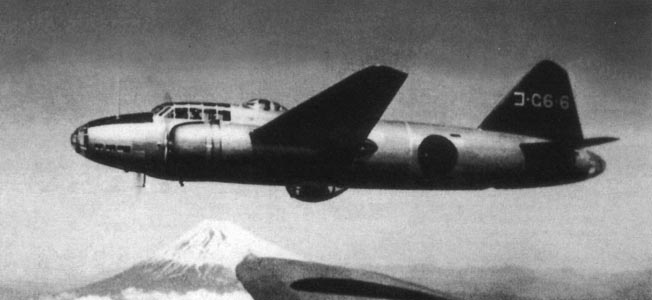
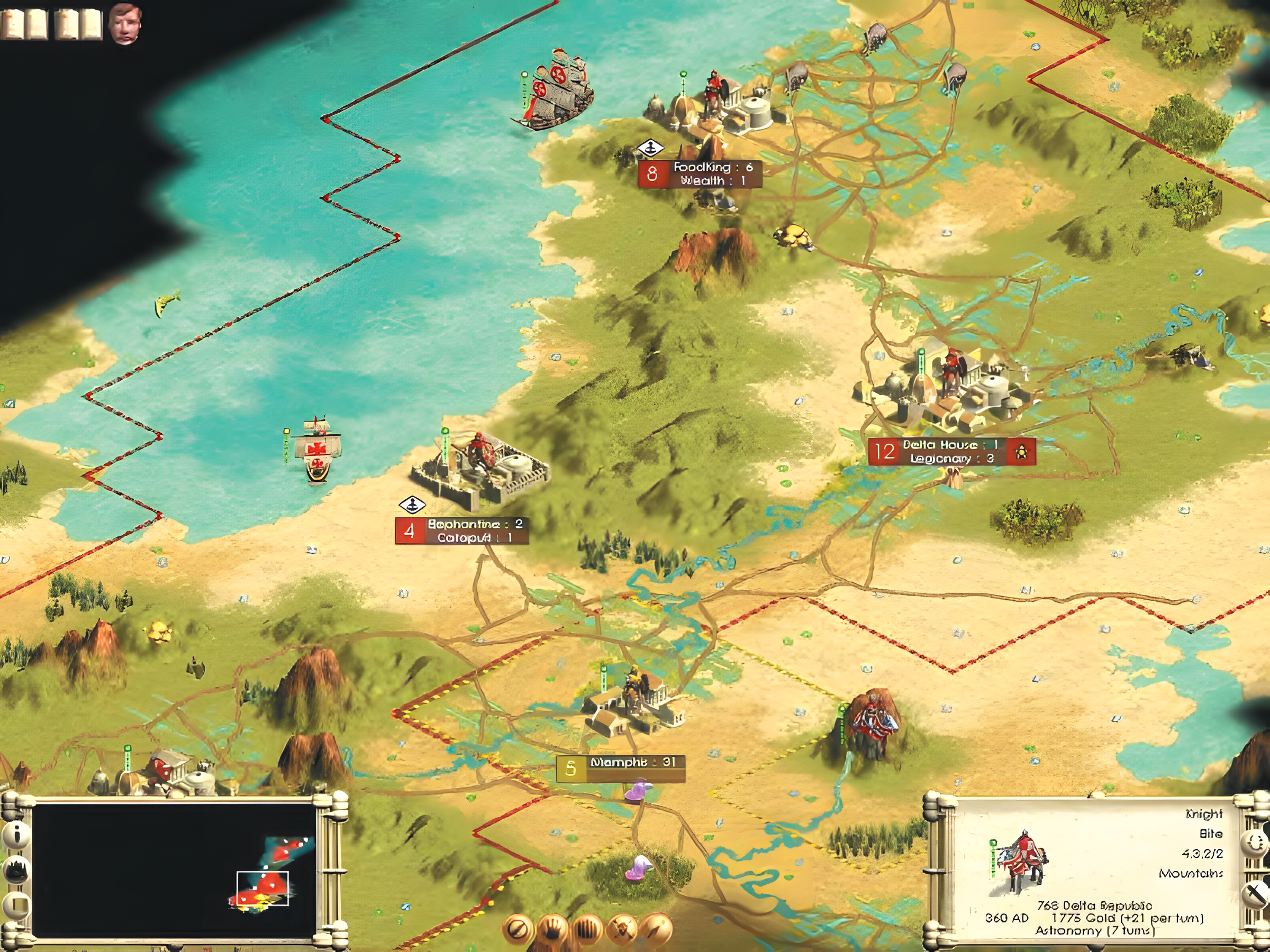
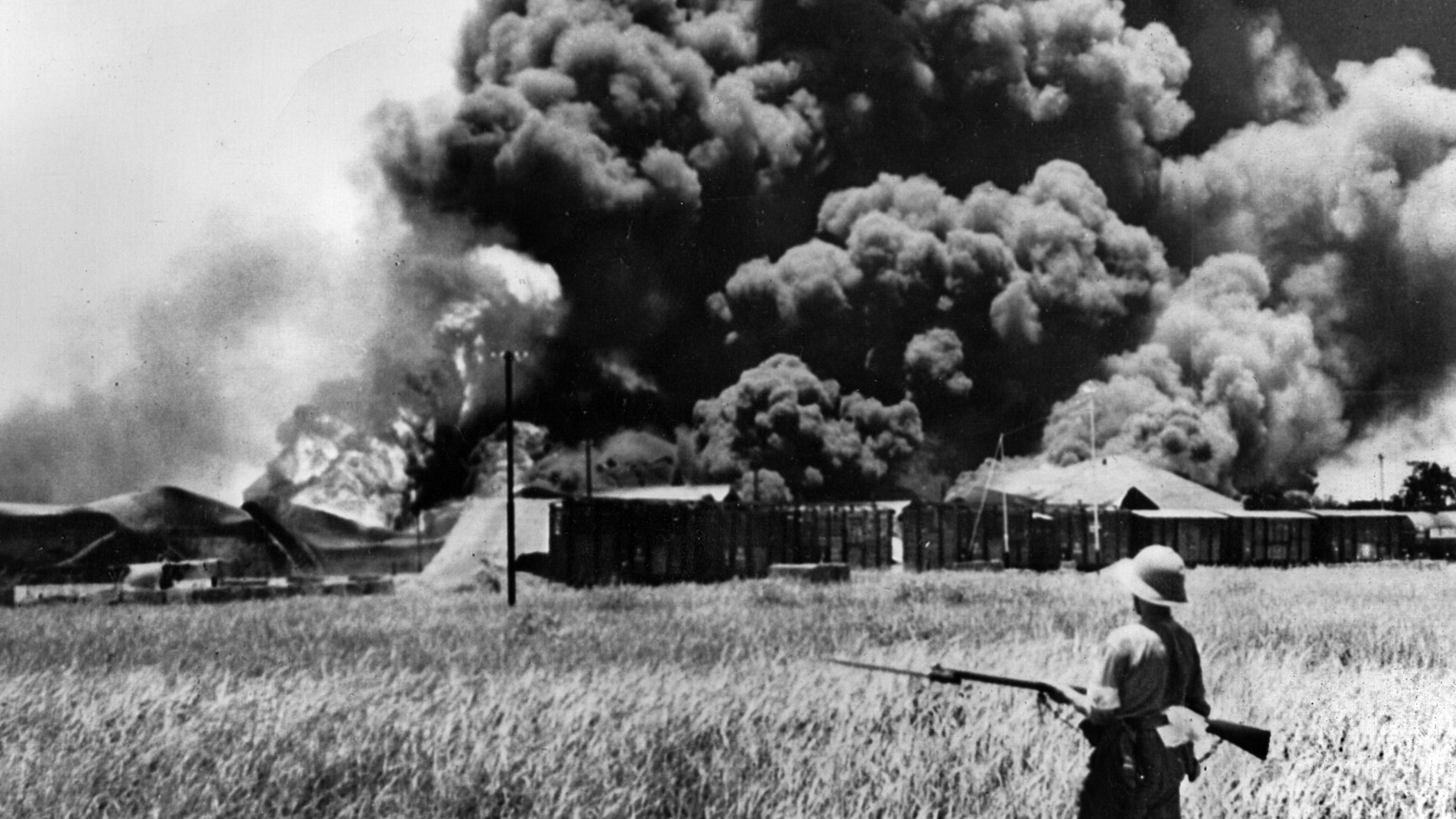
Join The Conversation
Comments
View All Comments